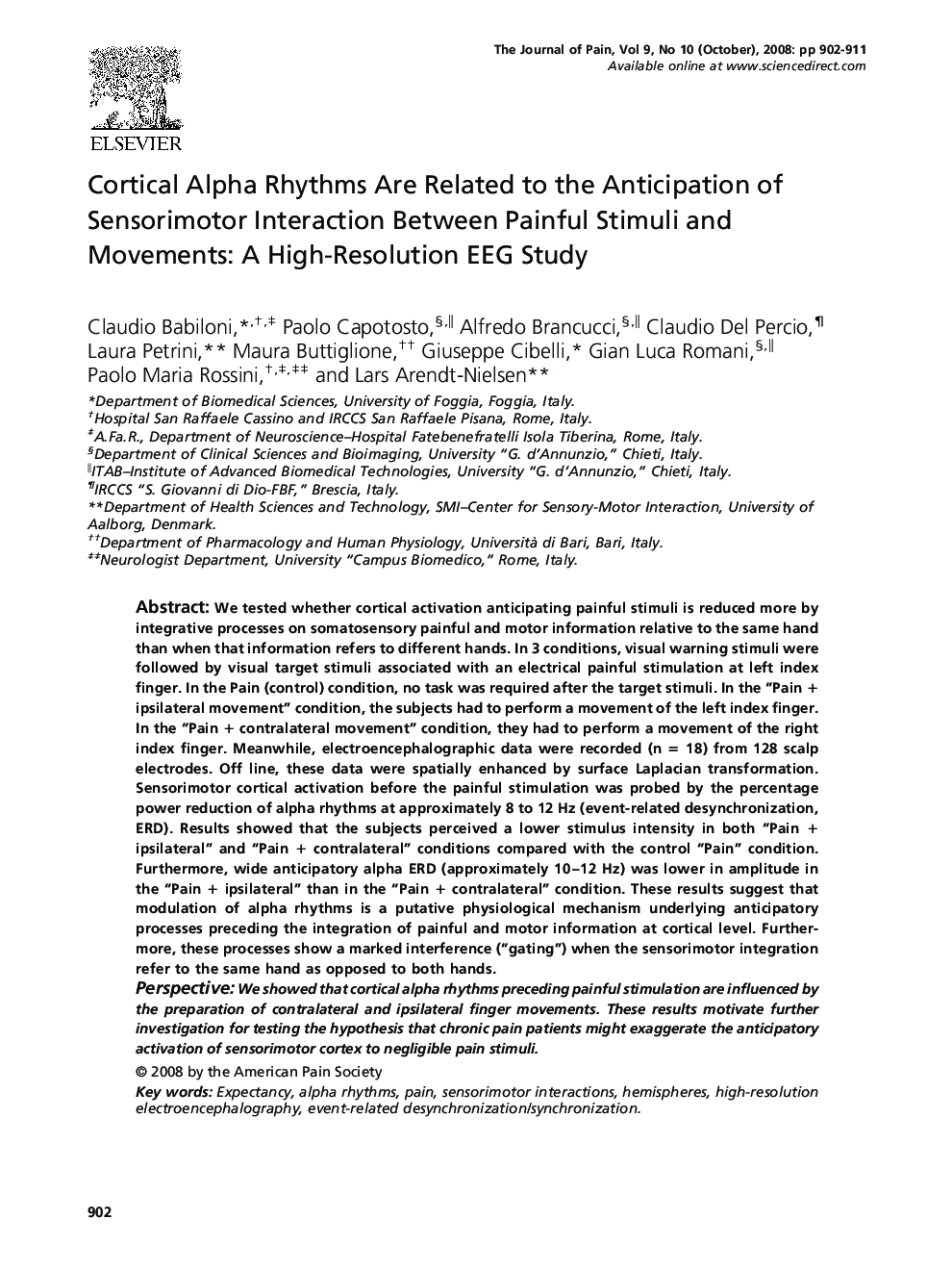| Article ID | Journal | Published Year | Pages | File Type |
|---|---|---|---|---|
| 2729515 | The Journal of Pain | 2008 | 10 Pages |
We tested whether cortical activation anticipating painful stimuli is reduced more by integrative processes on somatosensory painful and motor information relative to the same hand than when that information refers to different hands. In 3 conditions, visual warning stimuli were followed by visual target stimuli associated with an electrical painful stimulation at left index finger. In the Pain (control) condition, no task was required after the target stimuli. In the “Pain + ipsilateral movement” condition, the subjects had to perform a movement of the left index finger. In the “Pain + contralateral movement” condition, they had to perform a movement of the right index finger. Meanwhile, electroencephalographic data were recorded (n = 18) from 128 scalp electrodes. Off line, these data were spatially enhanced by surface Laplacian transformation. Sensorimotor cortical activation before the painful stimulation was probed by the percentage power reduction of alpha rhythms at approximately 8 to 12 Hz (event-related desynchronization, ERD). Results showed that the subjects perceived a lower stimulus intensity in both “Pain + ipsilateral” and “Pain + contralateral” conditions compared with the control “Pain” condition. Furthermore, wide anticipatory alpha ERD (approximately 10–12 Hz) was lower in amplitude in the “Pain + ipsilateral” than in the “Pain + contralateral” condition. These results suggest that modulation of alpha rhythms is a putative physiological mechanism underlying anticipatory processes preceding the integration of painful and motor information at cortical level. Furthermore, these processes show a marked interference (“gating”) when the sensorimotor integration refer to the same hand as opposed to both hands.PerspectiveWe showed that cortical alpha rhythms preceding painful stimulation are influenced by the preparation of contralateral and ipsilateral finger movements. These results motivate further investigation for testing the hypothesis that chronic pain patients might exaggerate the anticipatory activation of sensorimotor cortex to negligible pain stimuli.
